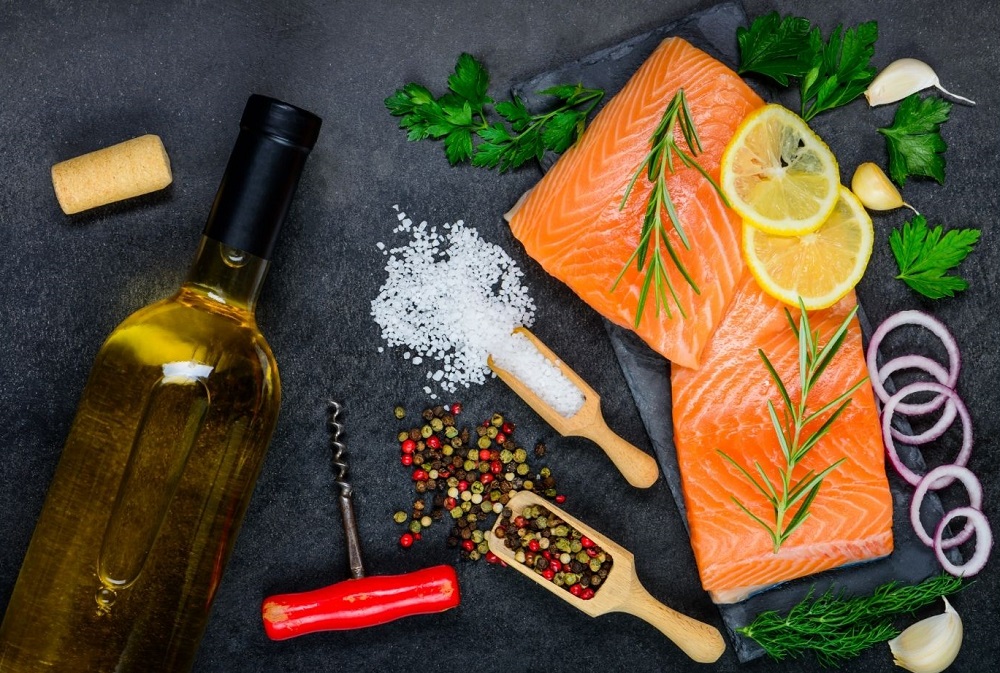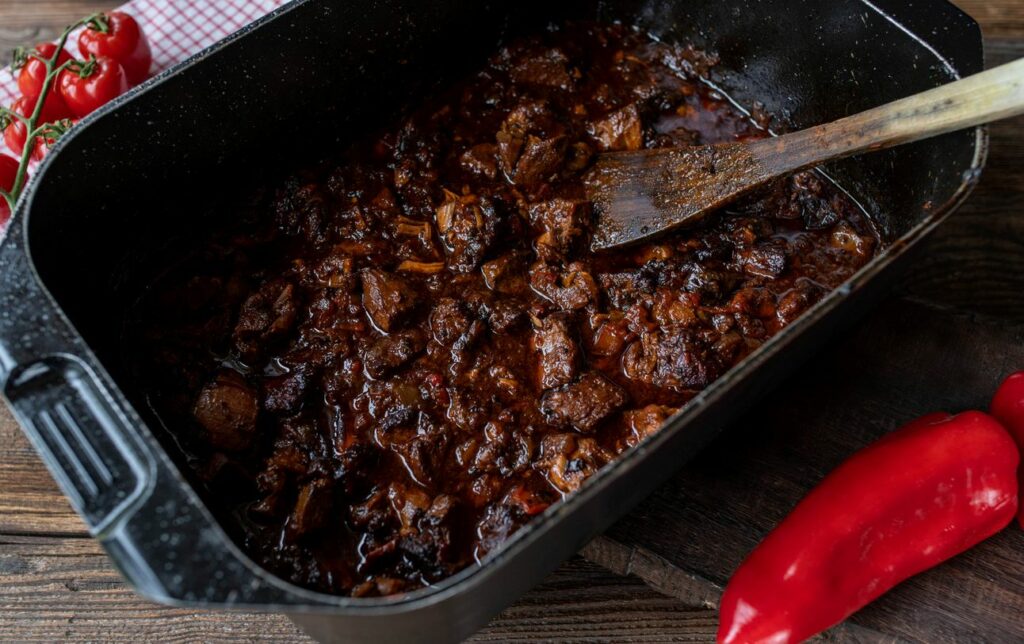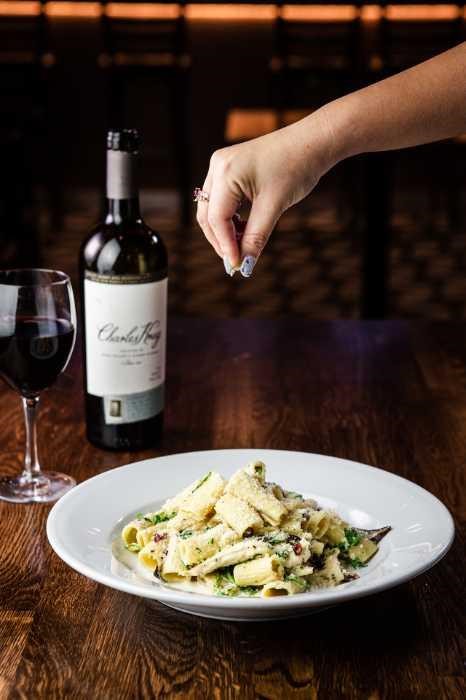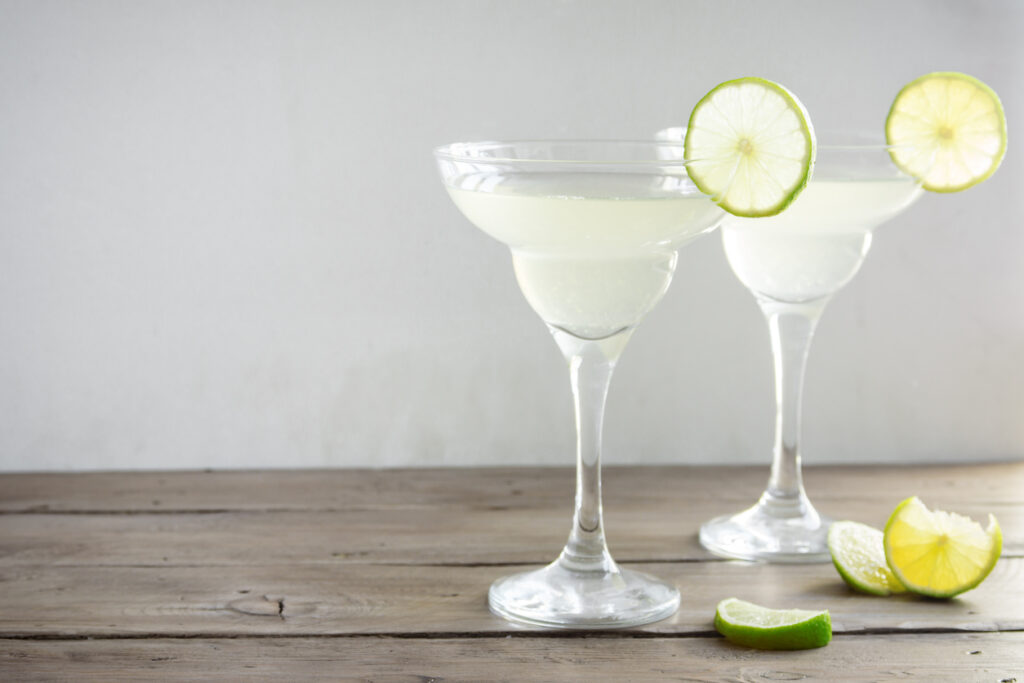When it comes to cooking wine, many cooks keep a bottle of cooking wine within reach for adding depth and flavor to their dishes. Unlike traditional wines enjoyed by the glass, cooking wine is specifically formulated for culinary use and includes added salt to extend its shelf life and adjust its taste profile for cooking purposes.
Given its unique makeup and purpose, cooking wine has a different shelf life compared to table wines. Knowing its longevity is essential to prevent spoilage and ensure the quality of your dishes.
Key Takeaways
- Proper storage is critical for extending the shelf life of cooking wine. Refrigerate cooking wine.
- Cooking wine’s added ingredients differ from regular wine, affecting its longevity.
- It’s crucial to identify signs of spoilage to ensure food safety when using cooking wine.
- leftover wine can be used as cooking wine but beware of off flavors in leftover wine. You will find them in your food, too!
- spoiled cooking wine can be easily identified by off flavours like vinegar note as well as deposits and discolourations
Shelf life of opened cooking wine
Understanding the shelf life of cooking wine starts with knowing how to properly store it. Temperature, light, and exposure to air can greatly affect the wine’s quality over time even for unopened bottles. The key to prolonging the usability of cooking wine lies in how it is handled after opening.

Does cooking wine need to be refrigerated?
Even after careful storage of unopened cooking wine, it’s important to recognize the signs that indicate if cooking wine is no longer suitable for use in meal preparation. Watch out for off smells or deposits and discolorations. This can impact both the flavor of your food and food safety.
Understanding Cooking Wine
Cooking wine plays a pivotal role in culinary arts, imparting flavor and depth to dishes. It is essential to appreciate its varieties, uses, and preservation.
Difference between cooking wine and drinking wine
Cooking wine is an alcohol product specifically intended for use in culinary preparations. It is typically salted and seasoned, which differentiates it from regular table wines.
In case you don`t have cooking wine you can use drinking wine as cooking wine and increase the salt content. The classic use for leftover wine for cooking is to use it and add salt and spices.

Definition and Types
Cooking wines come in several types, each suited to different dishes:
- Red Cooking Wine: Red wine used in hearty stews, sauces, and marinades.
- White Cooking Wine: White eine ideal for lighter dishes, such as poultry, seafood, and cream sauces.
- Sherry: Often incorporated as cooking wine into soups, desserts, and as a deglazing agent.
- Fortified wines: Port and Madeira are used for deglazing and sauces
Role in Cooking
In cooking, wine is utilized for its ability to enhance the flavor profile of food. It serves multiple functions:
- Deglazing: the cooking wine releases fond (browned bits) from the bottom of pans.
- Marinades: Breaks down fibers in meat for tenderness.
- Flavoring: Adds complexity to sauces and stews.

Does cooking wine need to be refrigerated?
The longevity of an unopened bottle of cooking wine depends on several factors:
- Preservatives: The added salt in cooking wine extends its shelf life compared to regular wines.
- Storage: Cool, dark places away from direct heat sources preserve its quality.
- Sealing: Tightly sealed bottles prevent oxidation, maintaining freshness.
Properly stored, unopened cooking wine can last between 1 to 3 years. Once opened, it should ideally be used within 2 months for best quality.
Storage Tips
Proper storage of opened and unopened cooking wine is crucial to extending its shelf life and maintaining its quality.
Proper Sealing
Cooking wine should always be sealed tightly after opening. Oxygen exposure will lead to deterioration of flavor over time. An excellent method for ensuring a good seal white cooking wines is to use a wine stopper specifically designed for wine bottles.
A wine stopper can provide airtight sealing, which is essential for preserving the wine’s character.

Temperature and Light Conditions
Does cooking wine need to be refrigerated ? – Cooking wine should be stored in a cool, dark place to prevent it from spoiling prematurely. Ideal storage conditions include:
- Temperature: Consistently between 50-60°F (10-16°C)
- Light: Minimal exposure, away from direct sunlight
Maintaining these conditions helps to slow down the oxidation process.
Refrigeration Benefits
To keep cooking wine fresh refrigeration can significantly extend the life of cooking wine up to two months after opening. Here are the optimal refrigeration practices:
- Duration: Refrigerate promptly after use
- Setting: Store upright to minimize oxidation
- Time Frame: Consume within 1-3 weeks for best quality
Refrigeration slows down the chemical reactions that cause wine to degrade, including the growth of unwanted bacteria.

Shelf Life Duration
The shelf life of cooking wine varies depending on whether the bottle of wine is opened or unopened, and the storage conditions.
Unopened Bottles
Unopened cooking wine typically lasts for 1-3 years past its printed expiration date when stored in a cool, dark place. If the bottle is kept away from fluctuations in temperature and light, it maximizes the shelf life of opened and unopened wine.
After Opening
Once opened, a bottle of cooking wine should be resealed tightly after each use. It generally remains good for 1-2 months when stored in the refrigerator. Factors such as the presence of preservatives in the wine can extend or shorten this time frame.

Identifying Spoilage
When it comes to cooking wine, recognizing spoilage is crucial to ensure both the taste and safety of your dishes.
Visual Clues
Color Changes: A clear indicator of spoilage in cooking wine is a noticeable change in color. An opened bottle of cooking wine that has started to spoil may take on a browner hue than its original color.
Sediment Formation: The presence of unexpected sediment or particles in the bottle can also be a sign of deterioration in an opened and unopened bottle.
Olfactory Signs
Sour or Vinegar-like Aroma: Cooking wine that emits a sour or vinegar-like smell has likely begun to oxidize and should not be used.
Unpleasant Odors: Any off-putting smells, such as mustiness or an aroma akin to that of rotten eggs, signify that the cooking wine is no longer fit for consumption.

Health and Safety
When considering the shelf life of cooking wine, it is crucial to prioritize health and safety concerns, as consuming spoiled wine can lead to foodborne illnesses.
Consumption Guidelines
- Unopened Cooking Wine: Typically lasts between 3-5 years when stored in a cool, dark place. The high salt content helps preserve the wine for cooking purposes.
- Opened Cooking Wine: Should be consumed within 1-2 months after opening. Refrigeration can extend its shelf life but check for signs of spoilage before use.
Signs of Spoilage:
- Odor: A sour or vinegar-like smell
- Color: Any noticeable change
- Taste: A harsh or off-putting flavor
Risks of Spoiled Wine
- Foodborne Illness: Spoiled cooking wine may harbor bacteria and toxins, leading to symptoms such as upset stomach, vomiting, and diarrhea.
- Chemical Changes: Over time, chemical reactions can alter the wine, resulting in undesirable compounds that could be harmful if consumed in large amounts.
It is advised to err on the side of caution and discard any cooking wine that exhibits signs of spoilage to avoid potential health risks.
Maximizing Longevity
To extend the shelf life of cooking wine, one must employ effective preservation techniques and use the right tools and accessories to minimize exposure to deteriorating elements .

Preservation Techniques
Once opened, cooking wine should be sealed tightly after each use. Exposure to air of the opened bottle of cooking wine can lead to oxidation, which diminishes the wine’s flavor and aroma.
Storing cooking wine in a cool, dark place helps delay spoilage. Refrigeration is particularly beneficial as it slows down the oxidation process. However, it should be noted that extreme temperatures should be avoided.
A stable storage temperature between 45°F to 65°F (7°C – 18°C) is optimal. Inversion of the bottle, ensuring the cork remains wet, can also be beneficial for cork-sealed wines, as it prevents the cork from drying out and letting in air.

Tools and Accessories
Using specialized wine stoppers as for regular wine can create an airtight seal that preserves the wine’s quality for a longer period. Vacuum pumps, which remove air from the bottle before sealing it with a stopper, are particularly effective.
Wine preservers that utilize inert gases to protect the wine from oxygen can also be advantageous, as these can displace the air in the bottle, greatly extending the wine’s life. They are used for expensive regular wine. You have to decide if you store opened cooking wine using such expensive preservation systems.
For regular home use, smaller bottles can be used to transfer excess wine, which reduces the amount of oxygen the wine is exposed to in a partially or half empty bottle too.
Can You Cook with Old Opened Wine
Yes, you can use an old opened wine bottle full of cooking wine or normal wine for cooking. You need to check the wine for unusual aroma and flavors by taking a small sip. If it tastes sour or off do not use it as cooking wine!

Cooking with Aged Wine
When cooking with aged wine, chefs must consider the altered flavors it imparts and select recipes that can harmonize with these characteristics. When using white wine or red wine or leftover wine for cooking one simple rule applies.
Do not use wine for cooking which you would not drink! Any off flavors which are in the wine will get stronger in your food as they are concentrated in the cooking process.
Flavor Impacts
Aged wines often develop complex flavor profiles that can differ significantly from their younger counterparts, oftentimes exhibiting notes of dried fruits and nuts, earthiness, and a reduction in fruit-forwardness. The intensity of these flavors can vary based on the type and quality of the wine in question.

- Tannins: Red wine tannins soften noticeably, changing the texture and astringency.
- Acidity: Especially in white wine may mellow out, affecting the overall crispness in a dish.
- Alcohol content: Remains relatively stable, which is crucial in cooking processes.
Suitable Recipes
Selecting the right recipe is critical when cooking with aged wine. Chefs will often use it in recipes that call for a nuanced flavor palette.
- Meat Dishes: Enhances stews, braises, and reductions.
- Sauces: Complements robust sauce bases with depth.
- Desserts: Can be a complex addition to poached fruits or dessert reductions.
It is important to use aged wine judiciously, ensuring it aligns with other ingredients’ flavor profiles to create a harmonious dish.
Can you use cooking wine to make cocktails, or is it only meant for cooking?
Cooking wine is often seen as a staple in the kitchen, but can it be repurposed for creating delicious cocktails? The answer is a resounding yes! Cooking wine, with its unique flavors and aromas, can add depth and complexity to cocktail recipes.
Its acidity and subtle fruit notes make it an excellent addition to mixed drinks, lending an unexpected twist to traditional cocktail flavor profiles.

One interesting way to use cooking wine in cocktails is to incorporate it into classic recipes like martinis or margaritas. For example, adding a splash of dry white cooking wine can elevate the flavor of a traditional gin martini, bringing a new dimension to this timeless drink.
Similarly, using sherry cooking wine in place of regular sherry in a margarita can introduce intriguing nutty undertones that complement the citrusy notes of the cocktail.
How Can You Tell If Cooking Wine Has Gone Bad?
Check the flavor of the cooking wine. If you detect a sour smell or an off taste it is bad cooking wine has gone bad.
Can You Drink Cooking Wine?
You can but you need to keep in mind that salt is added to cooking wines. Therefore they are more suitable for cocktails other wines where a dash of salt is suitable.
What Else Can You Do With Old Opened Wine?
Turning old wine into vinegar is a fascinating and sustainable way to repurpose leftover bottles that may have lost their appeal.
The process involves allowing the wine to ferment further with the help of acetic acid bacteria, which transforms the alcohol into acetic acid.
This creates a tangy and flavorful vinegar that can be used in cooking, salad dressings, or even as a cleaning agent.

How You Can Turn Old Wine into Vinegar
To start this transformation, pour the old wine into a wide-mouthed glass or ceramic container and cover it with cheesecloth to allow air exposure.
Store it in a warm, dark place for several weeks, ensuring that you periodically taste and assess its progress. Once the desired level of acidity is reached, transfer the liquid to a bottle or jar for long-term storage.
Not only does this process reduce waste, but it also provides an opportunity to experiment with different flavors by using various types of leftover red wines together.
Turning old wine into vinegar is not only eco-friendly but also allows for culinary creativity and adds depth of flavor to your dishes.

